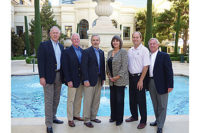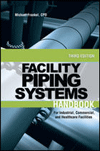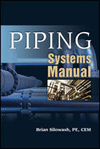The American Supply Association’s strategic plan is to be indispensable to achieving prosperity in the industry.
And the association is putting its money where its mouth is and then some when it comes to that plan with arguably it’s most important initiative ever — securing the PHCP-PVF industry’s long-term future.
As part of a process that started this past winter with a small group of industry thought-leaders diving deep into critical issues ASA members will face over the next decade (What will the ASA member of 2027 look like?) and continued on a much larger strategic planning scale during ASA’s Winter Leadership Meeting in February, three industry strategic-action teams have been assembled to drive plans of attack for three industry mega hot-button issues: the labor situation that looms large over the industry, how best to deal with the ever-changing technology landscape and helping ASA members evolve their businesses dependent upon where they fall within a four-category spectrum.
In early September, the human-capital and technology ISATs met at the Chicago Hilton O’Hare and kicked off the time- and labor-intensive process of crafting plans of attack under the direction of ASA consultant and Supply House Times columnist Dirk Beveridge, who facilitated the original winter think-tanks.
Beveridge also directed the important Winter Leadership Meeting strategic planning session in February where nearly 70 ASA volunteer leaders put in two days of intense work to further advance this critical initiative that set the stage for the ISATs to meet. ASA’s Executive Committee green-lighted the ISAT assembly at its July board meeting in Chicago and the initiative has received significant investment from ASA member regions.
The spectrum ISAT held its first meeting earlier this month. The three ISATs, which will continue to meet in the coming weeks, will present their plans of attack to ASA member leadership at the 2019 Winter Leadership Meeting in February in Southern California.
Labor shortage
The first ISAT meeting in early September centered on the ongoing labor shortage in the PHCP-PVF supply chain. That team featured Chicago Tube & Iron President and CEO Dr. Don McNeeley, Central States Industrial Supply President/CEO Todd Ford, Winsupply President and CEO Roland Gordon and Coburn Supply Vice President-Assistant Treasurer-Director of Finance & Strategic Planning Christy Maloney.
“Our industry is not sexy,” Maloney said, repeating a familiar refrain in the industry over the years. “You have to sweat and get dirty.”
The not-sexy argument was brought up along with other labor-hampering issues such as an increasing reticence of individuals to seek leadership roles in companies, as well as changing work-ethic mindsets and the industry’s overall lack of compelling message about its many long-term benefits.
“There are a lot of forces in motion like parents not wanting their children in these types of industries,” Gordon said. “It’s make sure you get a college degree instead of going directly from high school to the trades or wholesaling, or go work for more glamorous companies such as Amazon and other disruptive businesses.”
McNeeley agrees the industry has not done a good job of waving its own benefit and opportunity flag. “I’m so proud of our industry and all the good we do, but I would give us a failing grade in that regard,” he said. “Those of us who do, it’s usually anecdotal or the equivalent of drive-by promotion. You speak at the chamber of commerce or you go to your kid or grandkid’s career day and it’s one and done and you walk away. We don’t scale that experience. This problem has been percolating for a long time and now it’s come home to roost. The fact ASA is funding something of this magnitude and to this detail means there finally is a realization that something needs to be done.”
Gordon added: “We have to get the word out that distribution is a very good career path and it has very high potential where you can make a lot of your financial dreams come true, grow a career and be proud of what you created. I fell into distribution and wish I would have known about it sooner. We have to get the word out sooner and let people know it’s a good industry to join. We have a lot to offer. It’s not sexy, but it is a very good career opportunity.”
McNeely thinks the labor shortage can be solved, “but I think it’s going to be fixed through a nontraditional answer,” he said. “You can pay people more, but that’s not the only motivator and you don’t want people in your industry only for financial gain. You want them to have a passion and to know they can make a difference in our society as whole. They can invest in a career of personal relevancy.
“You also don’t want them there by default so I think the answer may rely on something more creative such as the role immigration plays. If we need bodies in our industry and can’t find them for a variety of reasons, one of which is the sure will and another is the work-life balance of the next generation, then we need to really step back and visit these nontraditional answers to see if we can draw from somewhere else.”
McNeeley said ASA is spot-on with the ISAT initiative and is happy to provide his insights into helping solve the labor quandary. “I have prepared 30 young men and women to lead our company into the future,” he said. “How do I get my 104-year-old company to 204 years? I have that down. If that’s my special sauce and differentiation, why would I want to share that? Because the industry needs it. This issue goes well beyond one company. No man is an island and we certainly cannot exist without an industry.”
McNeeley punctuated his thoughts on the importance of this ASA initiative by citing a spiritual quote “that says, ‘To do good you should find the best interest in one another and act on their behalf.’ Finding, recruiting and preparing the next generation of industry leaders is in the best interest of not only the next generation but also the best interest of ourselves and our entire industry.”
The tech piece
The second of the three mega issues being tackled is how ASA member distributors can get in front of the ever-changing technology landscape and the potential for disruption it may cause. This strategic action team featured The Granite Group President and CEO Bill Condron, Charles D. Sheehy President Jeff Camuso, Kitchen and Bath Stores at First Supply COO Katie Poehling-Seymour and Winsupply Chief Marketing Officer Steve Edwards.
“It’s gotten to a very critical point,” Condron said. “Technology is probably the biggest or scariest change we see coming because so much of it is unknown. It can be an enabler to help make us become more efficient and get us closer to our customers. It also can be a disruptor and wipe us out of an area where we thought we were entrenched. That’s the double-edged sword and that’s why we need to spend time as an industry trying to figure out how to embrace it and make it work for us instead of watching it work against us.”
Camuso brought up the example of how Uber and Lyft completely disrupted the taxi-cab industry, which, as Poehling-Seymour pointed out during this exchange, thought it was on the cutting-edge when it added television/credit-card screens in their taxis, but has long since been passed by ride-sharing concepts.
Another ISAT member brought up the extreme concern of an entity disrupting the industry by issuing credit directly to customers and cutting out the distribution portion of the puzzle.
“The scariest part is the unknown,” Condron added. “We can see Amazon and we are right to be concerned about it, prepare for it and try to figure it out. What about the stuff we haven’t thought of? There’s some kid out there with an app who has no vested interest in the industry and doesn’t have the knowledge and muscle-memory we do now to get things done. They could come in and totally disrupt things. And if it doesn’t work, they just close up shop and try again in another space.”
One key takeaway from the technology session was the idea of ASA vetting technology companies and presenting their benefits and making their services available to the membership as a whole.
“It’s not too late for us by any stretch, but we are vulnerable to some third-party competition,” Camuso said. “Traditionally our industry always has been behind. We need to invest in new technologies immediately. I’m not talking about new webstores or online ordering or social media. I’m talking about cutting-edge tech such as artificial intelligence and data analytics. We’re distribution folks, we’re not tech folks. We need somebody to come in and lay out what tech is available and what tech we should be investing in. You can take a wrong turn and invest a lot of money in something that won’t benefit our industry.”
Condron added: “You can’t just put your head down and say this stuff is too big and too scary and too unknown. We clearly don’t have all the answers, or maybe even the right questions at this point. However, if you don’t open your eyes and start asking some of those questions, you risk being wiped away.”
The November issue of Supply House Times will feature a report on the first spectrum ISAT meeting, plus a special guest column from ASA CEO Mike Adelizzi on this industry-changing initiative.
This article was originally titled “ASA members take action” in the October 2018 print edition of Supply House Times.












